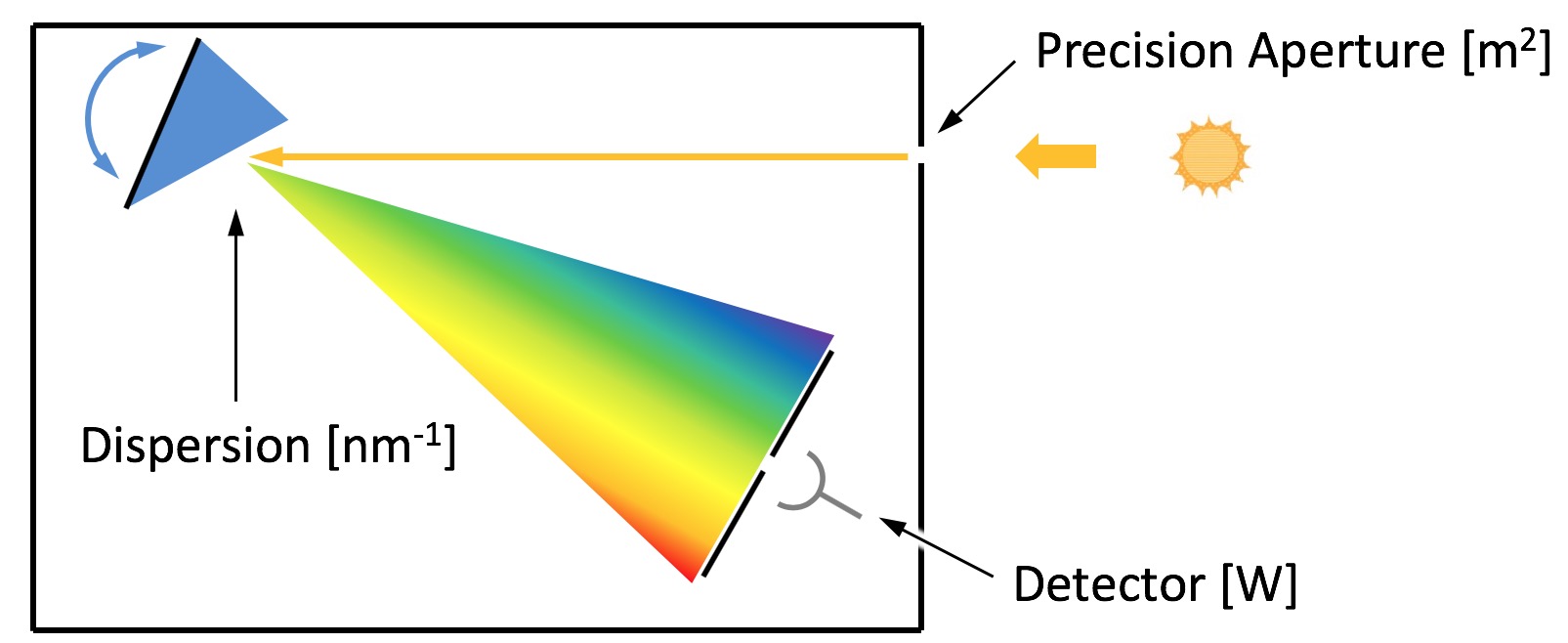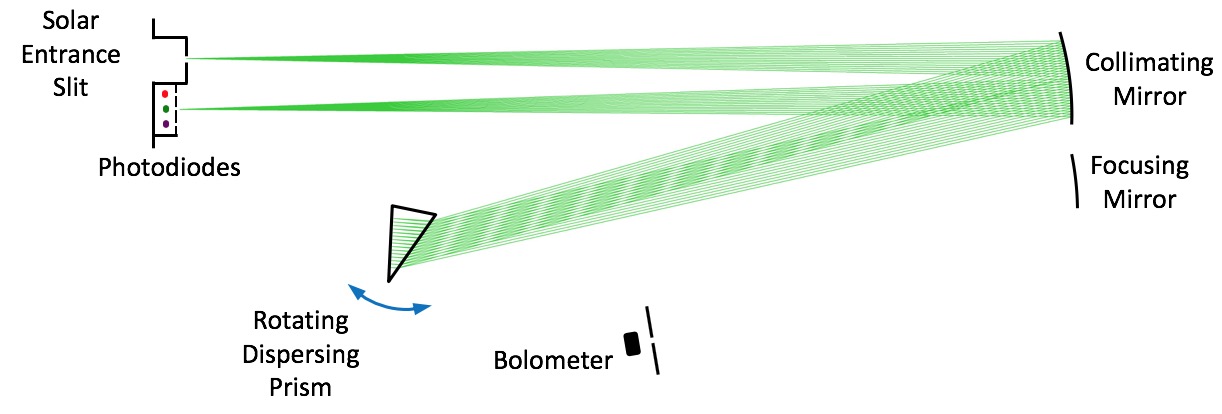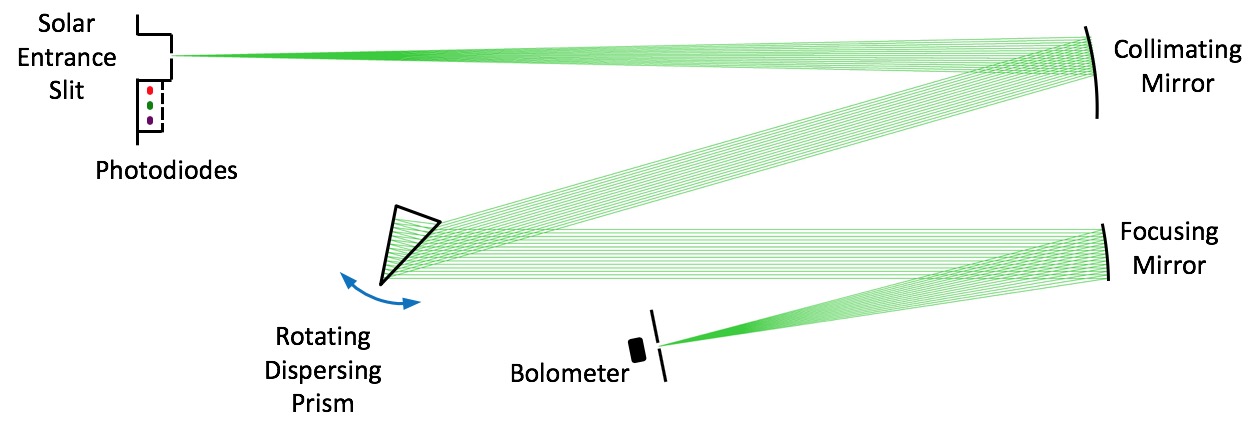CSIM Instrument
At the most simple-level the CSIM instrument consists of a precision aperture, a prism, and a detector:

The precision aperture lets a well-defined amount of solar illumination into CSIM. The prism disperses, or spreads out, the solar light in different colors. Then a detector measures the amount of light, or power, at each wavelength.
A raytrace of the CSIM Photodiode optical path is shown below:

After passing through the precision entrance aperture the light falls onto a collimation mirror. This collimated light then bounces off a dispersing prism. The second-surface of this prism has a reflective coating, so the dispersed light passes back through the front face of the prism. This light then bounces back off the collimation mirror and is focused onto the focal plane with the photodiodes. Wavelength tuning of this system is accomplished by rotating the dispersing prism.
The photodiodes on the photodiode focal plane are silicon (200-1000 nm), indium gallium arsenide (900-1700 nm), and extended indium gallium arsenide (1600-2600 nm). With these three photodiodes we can measure the solar spectrum from 200-2600nm in 44 minutes, and so these are the primary detectors for the solar measurements. Photodiodes have very good signal-to-noise and speed; however, they do experience radiation damage on-orbit and so an additional detector is needed in order to re-calibrate the photodiodes over the course of the mission.
The additional detector is a bolometer, specifically an electrical substitution radiometer. The basic principle of operation is that the a bolometer measures optical power by detecting absorbing the light and then very precisely measuring the amount of heating the light induces. This type of detector is slower and has lower signal-to-noise but works over a very broad wavelength range (<200nm to >10,000 nm) and is very robust to on-orbit radiation damage. The CSIM ESR was fabricated by the Sources and Detectors Group at NIST Boulder:

The CSIM ESR is fabricated from silicon and uses vertically-aligned carbon nanotubes as the optical absorber. The noise level of this new CSIM ESR is a factor 7 lower than the TSIS SIM ESR.
The optical path for the CSIM ESR is shown below:

By rotating the prism further the dispersed light is directed to a second mirror that focuses the light onto the ESR detector. Due to the slower speed of the ESR it takes over 10 hours to take a solar spectrum with the ESR. Because of this, the purpose of the ESR is to calibrate the photodiode, and the photodiode, in turn, measures the solar spectrum.
